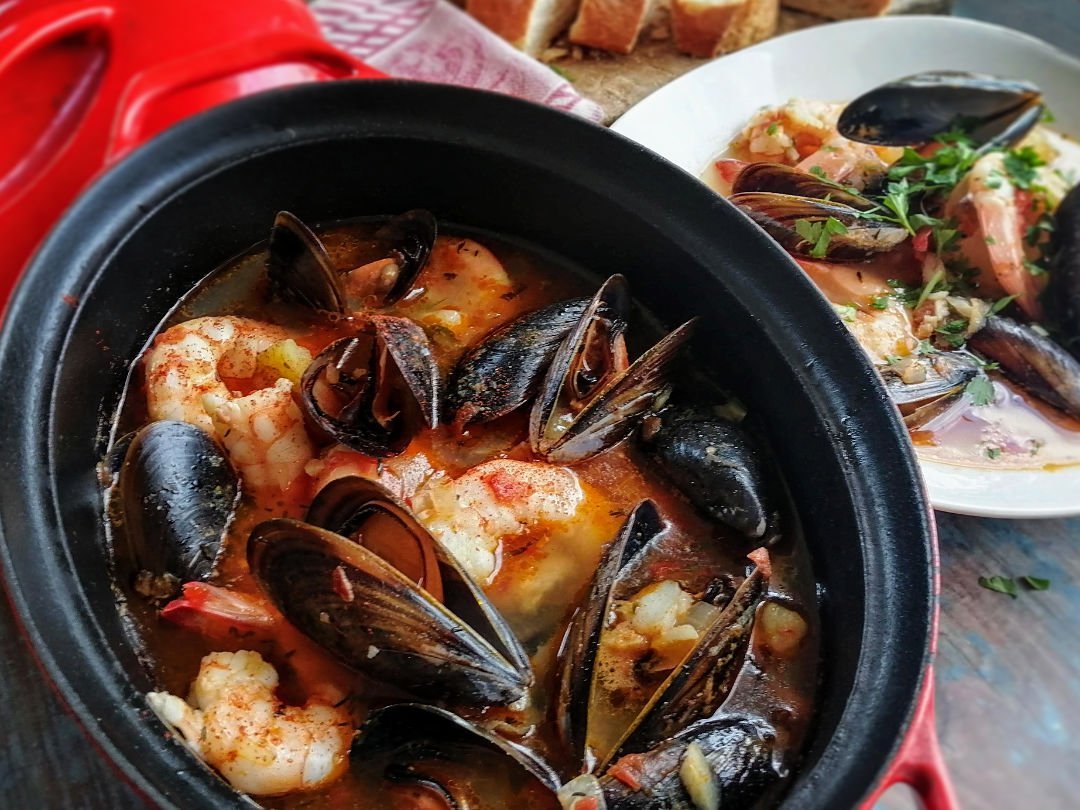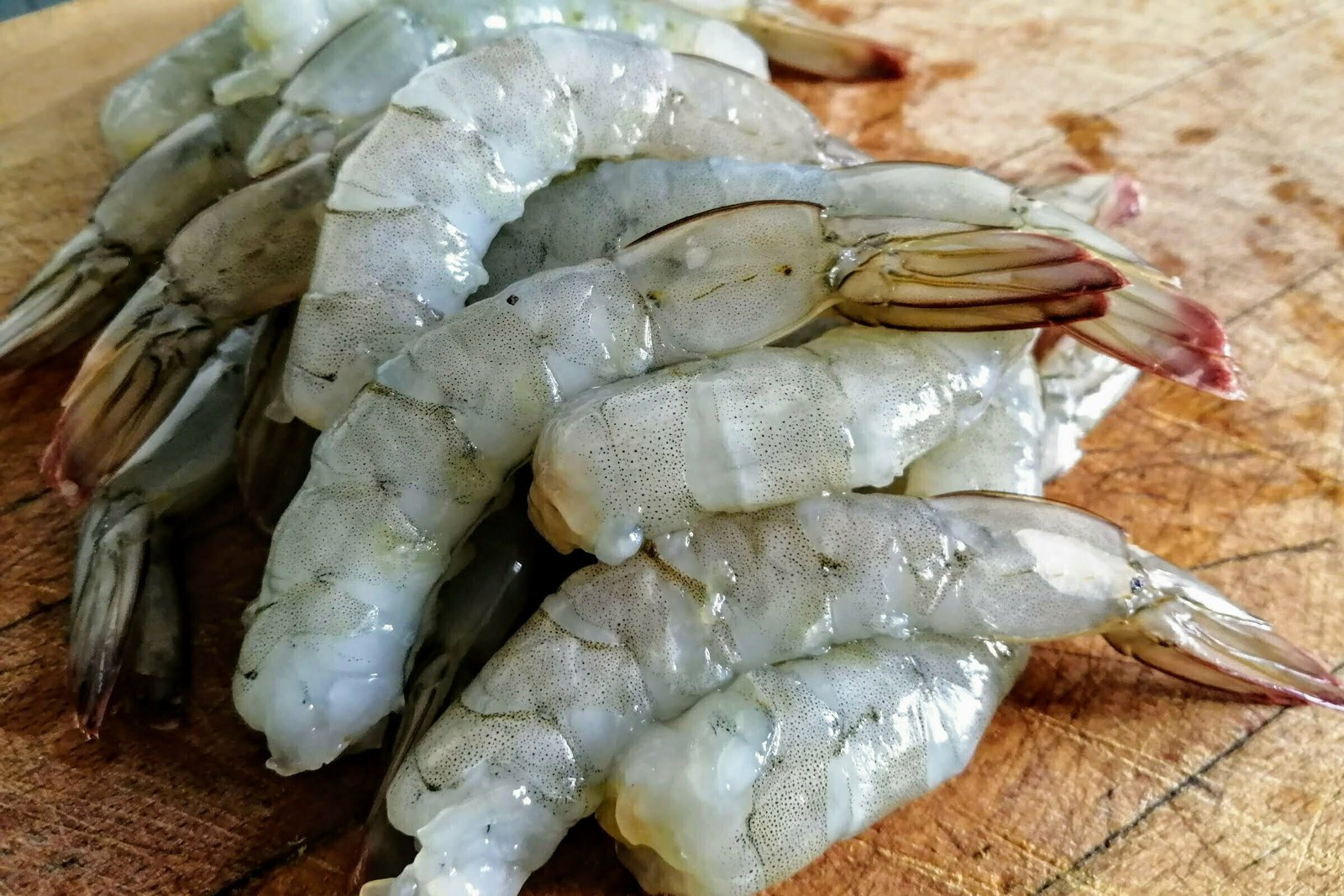Serving:
Main for 6
Ready in:
45 minutes
Skill level:
Easy
Serve with:
Fresh bread
About This Recipe
There are three principle ingredients to this dish; fresh seafood, sweet paprika, and saffron. A simple combination, yet special consideration should be taken to find the very best of each.
It’s really worth spending a little extra time to make your own homemade fish stock. It’s easy, and when made an hour prior to making the recipe, will really add something special to your dish.
While this dish is typically made using monkfish, you can substitute and use any white fish that you can find.
For this recipe, I’ve used bacalao (Spanish Cod) as it’s plentiful and cheap in this region: Valencia. Just make sure all the seafood is as fresh as possible as using frozen seafood just won’t bring all the flavors together as much as this dish deserves.
Making the best fish stock
When buying your fish, ask the fishmonger to fillet it for you and to keep the bones and head. You can use the head and bones to make the delicious fish stock that will really make this dish pop compared to using off-the-shelf fish or seafood stock.
To make the stock, you’ll need around 1kg of fish bones to make around a liter/1 quart of stock. First, add a finely chopped onion and sauté with some good-quality olive oil. Cook for around 4-5 minutes or until the onions have softened and begun to golden.
Next, add the fish bones, 1.5 quarts/liters of water, a bay leaf, and a few sprigs of fresh thyme to the pot. Simmer on medium-low heat for around 20-30 minutes.
Once done, use a sieve to strain the stock and remove the unwanted bones and other ingredients. You should be left with around a liter of homemade quality fish stock. Awesome!
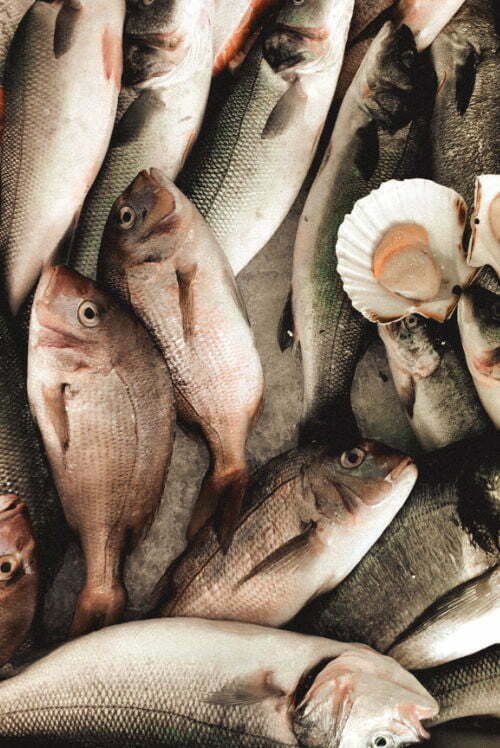
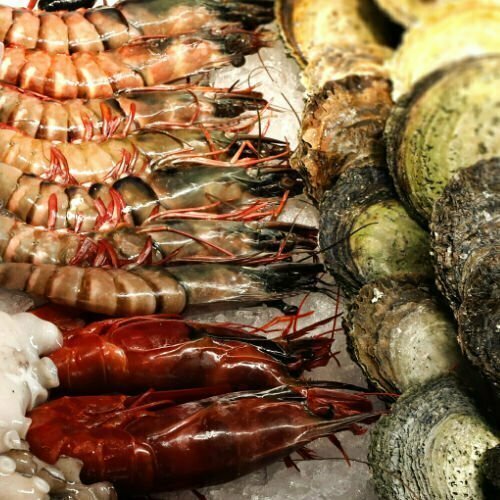
Seafood Variations
Like a lot of Spanish stews, cooking is really about finding what’s available and freshest at the market, and this Spanish seafood stew is no exception!
If monkfish isn’t available in your area “no pasa nada” (no worries), just use a different white fish instead. No prawns on market day, “no pasa nada”, throw in some squid or shellfish instead.
The beauty of this dish is experimenting with seafood that’s thrown in the pot and the amazing flavors that are produced.
For this recipe, we’ve opted for a good hunk of bacalao (codfish), 15 large uncooked prawns, and a bag (1kg/2.2lb) of mussels. All are super easy ingredients to find at any decent fishmonger where we live and they won’t break the bank.
The World’s Best Saffron
The world’s best saffron is grown on the fertile farming lands of the Castilla La- Mancha region in central Spain. During Fall in the small rural village of Villacañas, enormous fields almost magically transform overnight, blanketed with the stunning purple crocus flower.
The crocus flowers are quickly harvested by hand and then the laborious process of picking the saffron stigma from each flower takes place. Next, the stigma is dried and roasted over charcoal in a traditional method that has been passed through generations. Each night, as the harvest workers sleep, new flowers bud and await the rise of the sun for harvesting.
Saffron threads harbor an intense and delicate flavor that varies with age, young saffron will often have a vanilla or caramel taste, while older saffron will become more intensely flavored and often have a taste of licorice.
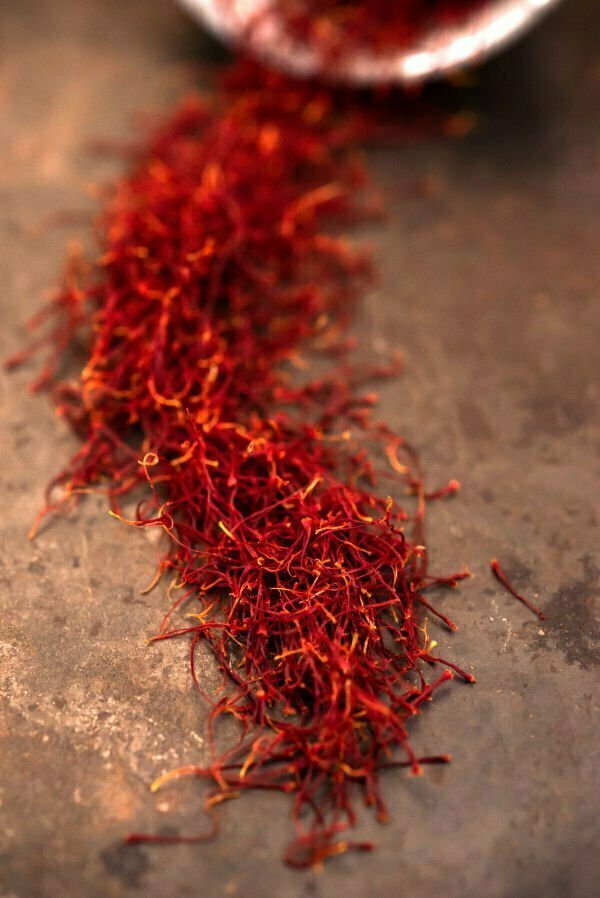
Saffron has an intensity and color that is released when cooking, so it should be used sparingly.
Just 0.1 grams of saffron is more than enough for this entire dish that’s made for 6 people!
Spanish Paprika (Pimentón)
Paprika or Pimentón is a staple found in every Spanish kitchen as it’s one of the most used spices in Spanish cuisine. This valued and varied spice comes in a range of different flavors, from sweet, smokey, and picante (spicy).
Knowing when to use the right paprika is important. In this dish, you’ll want to bring out the sweet-tasting seafood using sweet paprika (pimentón dulce).
Much in the same way that olive oil and wine have their own tightly controlled Denomination of Origin (D.O.), paprika has the same, and the best quality Spanish paprika is found within two distinct regions of Spain.
Unsmoked Spanish Paprika (D.O. Pimentón De Murcia)
Sweet paprika, or ‘pimentón dulce’, is made from the Bola pepper, which tends to be a more plump and sweet pepper. Bola pepper farms lie inland from the Mediterranean Sea and scatter the Murcia region, dedicated to making the high-quality Pimentón De Murcia.
The sweet fruits are still hand-picked and laid out in the sun to dry. After a few days, the peppers are dried enough to be crushed into a sweet, bright red powder.
Smoked Spanish Paprika (D.O. Pimentón De La Vera)
The more traditional smoked paprika is produced in rural regions of Extremadura, most notably the small town of La Vera. The Ocales variety of peppers are grown and harvested there and are known for their distinctive deep red color.
During the harvest season of the spicy peppers, it often rains, so it is tradition to dry the peppers by hanging them within the chimney of a fireplace. This drying process gives the peppers a wonderful smoked flavor that has become synonymous with Spanish paprika.
Throughout Spain, you’ll find the Pimentón de La Vera packaged and sold extensively and it’s well-known to be of the highest quality smoked paprika you can buy in Spain.
Why Toast Paprika?
Spanish paprika is usually has a distinct smoky flavor and aroma, and this flavor can be enhanced even further by toasting your paprika before using it. It’s super quick and easy to do, and is highly recommended for this Spanish seafood stew recipe!
To toast your paprika, use a dry frying pan or pot and heat the pan for a minute. Add the paprika and give the pot a light shake to keep the spice moving. Only toast it for a minute or two, and if the spice smokes at all, take it from the heat immediately.
Now that we’ve gathered the absolute best core ingredients we can find, we’re ready to cook the ultimate Spanish seafood stew. Let’s go!
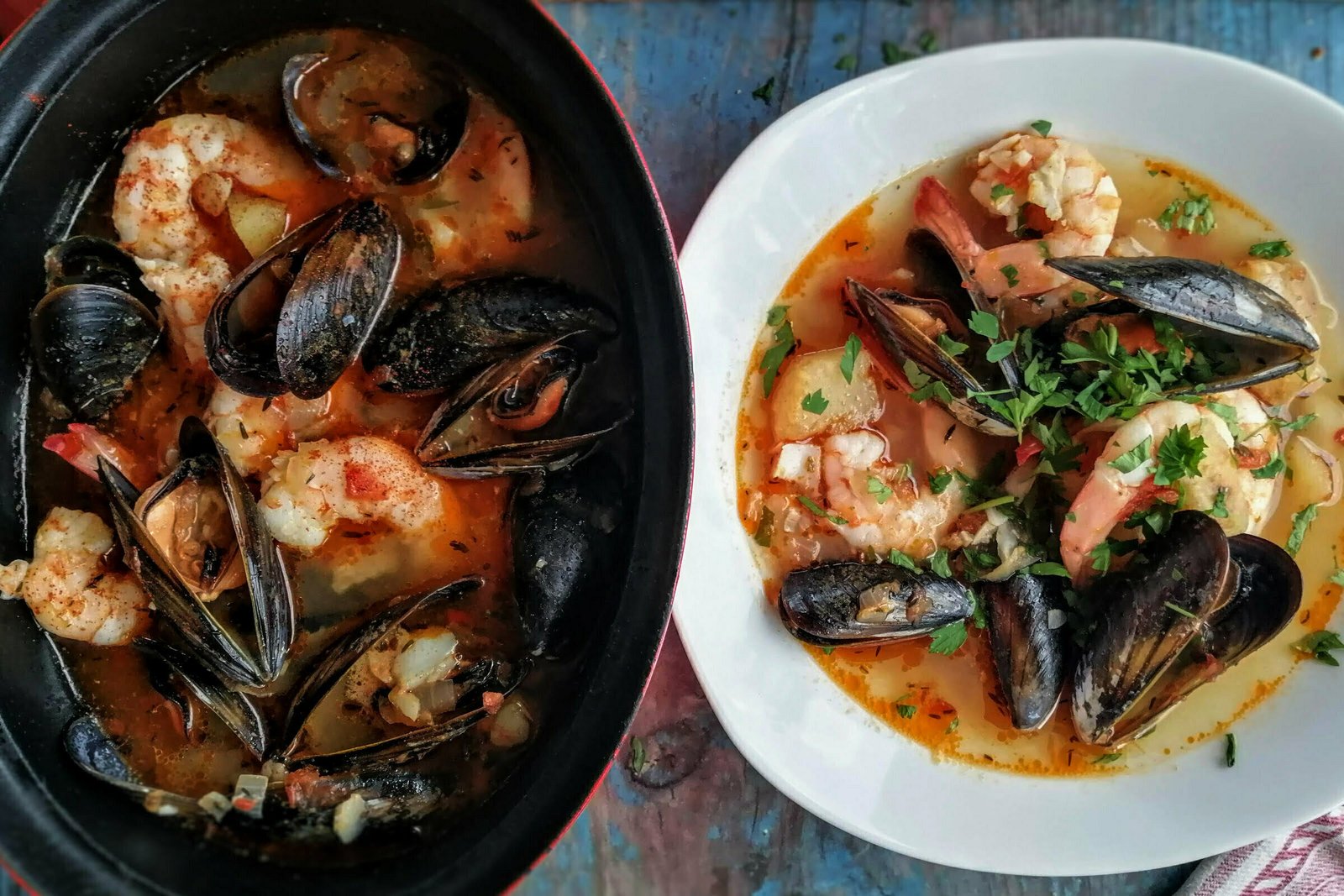
How to make Spanish seafood stew
Equipment needed
A large pot (30cm/12 inches) with deep sides (10cm/4 inches).
Ingredients
Method (step-by-step)
- 1/4 cup extra virgin olive oil (60 ml/2 oz.)
- 1/2 onion, diced
- 6 cloves garlic, diced
- 2 tomatoes, grated
- 2 large potatoes, cut into 1/2 inch pieces
- 21 oz (600 grams) cod fillet, cubed into inch pieces
- 15 large raw prawns, peeled & deveined
- 35 oz (1 kg) fresh mussels, cleaned and debearded
- 2 tsp sweet smoked Spanish paprika
- 1 tsp dried thyme
- 1/4 tsp saffron threads (approx 0.15 grams)
- 4 cups fish broth (approx 1 liter)
- A handful of fresh parsley, chopped.
- ½ tsp of chili flakes
- Black pepper for seasoning
Method (step-by-step)
Step 1 – Toast the Paprika
- Toast your paprika by putting a large pot onto a medium heat for 1 minute. Allow to heat up and then add the paprika.
- Give the pot a shake for around 1-2 minutes, allowing the paprika to lightly toast. Once toasted, remove from the pan for use later.
Step 2 – Fry the Prawns
- In the large pot on medium, add half of the olive oil and allow to heat for 2 minutes.
- Add the raw prawns and cook till they become red. It should take around 2-3 minutes per side, turn occasionally so they don’t burn.
- Once the prawns are cooked, add the remaining garlic and fry for another 2 minutes. Once done, remove from the pot for use later.
Step 3 – Saute Onion, Garlic, Tomatoes & Spices
- On medium heat, add to the pot the chopped onion and saute for around 3-4 minutes or until the onion begins to golden.
- Add the other half of the chopped garlic and stir through with the onion for 2-3 minutes. Once done, add the grated tomatoes and stir through for 3-4 minutes.
- Next, add the chili flakes, paprika, thyme, saffron threads, and season with a little black pepper. Stir through and cook for 2-3 minutes.
Step 4 – Add Stock & Potatoes
- Add the fish stock and bring to a boil. Once the stock and ingredients are boiling, add the potatoes and reduce to medium/low heat. Cover and let simmer for around 20 minutes or until the potatoes are soft.
Step 5 – Add the Seafood
- Once the potatoes are soft, add the cod and stir through. Allow to cook for 2-3 minutes and then add the mussels. Cook for another 5 minutes on medium heat with the lid on.
- Once ready, the mussels should have opened and the seafood will be cooked perfectly. Add the large prawns and give the stew a good stir, allowing the prawns to warm in the mixture for a minute or two, releasing their delicious sweet flavor into the stew.
Step 6 – Serve!
- To serve, ladle the stew into serving bowls and garnish with a little chopped parsley.
This dish is best served with a few generous chunks of fresh bread and washed down with a nice cool glass of dry Spanish white wine such as the aromatic rueda wine.
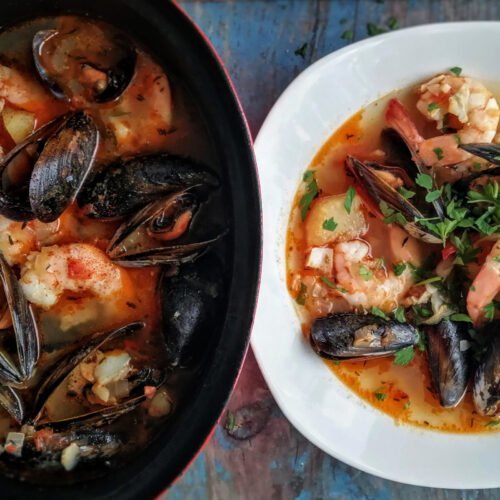
Spanish Seafood Stew
Equipment
- 1 large 30cm/12 inch pot with deep sides of at least 10cm/4 inches
Ingredients
- 1/4 cup extra virgin olive oil 60 ml/2 oz.
- 1/2 onion diced
- 6 cloves garlic diced
- 2 to matoes grated
- 2 large potatoes cut into 1/2 inch pieces
- 600 g / 21 oz cod fillet, cubed into inch pieces
- 15 large raw prawns peeled & deveined
- 1 kg / 35 oz fresh mussels cleaned and debearded
- 2 tsp sweet smoked Spanish paprika
- 1 tsp dried thyme
- 1/4 tsp saffron threads approx 0.15 grams
- 4 cups fish broth approx 1 liter
- A handful of fresh parsley chopped.
- ½ tsp of chili flakes
- Black pepper for seasoning
Instructions
Step 1 – Toast the Paprika
- toast your paprika by putting a large pot onto a medium heat for 1 minute. Allow to heat up and then add the paprika.
- Give the pot a shake for around 1-2 minutes, allowing the paprika to lightly toast. Once toasted, remove from the pan for use later.
Step 2 – Fry the Prawns
- In the large pot on medium, add half of the olive oil and allow to heat for 2 minutes.
- Add the raw prawns and cook till they become red. It should take around 2-3 minutes per side, turn occasionally so they don’t burn.
- Once the prawns are cooked, add the remaining garlic and fry for another 2 minutes. Once done, remove from the pot for use later.
Step 3 – Saute Onion, Garlic, Tomatoes & Spices
- On medium heat, add to the pan the chopped onion and saute for around 3-4 minutes or until the onion begins to golden.
- Add the other half of the chopped garlic and stir through with the onion for 2-3 minutes. Once done, add the grated tomatoes and stir through for 3-4 minutes.
- Next, add the chili flakes, paprika, thyme, saffron threads, and season with a little black pepper. Stir through and cook for 2-3 minutes.
Step 4 – Add Stock & Potatoes
- Add the fish stock and bring to a boil. Once the stock and ingredients are boiling, add the potatoes and reduce to medium/low heat. Cover and let simmer for around 20 minutes or until the potatoes are soft.
Step 5 – Add the Seafood
- Once the potatoes are soft, add the cod and stir through. Allow to cook for 2-3 minutes and then add the mussels. Cook for another 5 minutes on medium heat with the lid on.
- Once ready, the mussels should have opened and the seafood will be cooked perfectly. Add the large prawns and give the stew a good stir, allowing the prawns to warm in the mixture for a minute or two, releasing their delicious sweet flavor into the stew.
Step 6 – Serve!
- To serve, ladle the stew into serving bowls and garnish with a little chopped parsley.
- This dish is best served with a few generous chunks of fresh bread and washed down with a nice cool glass of dry Spanish white wine such as the aromatic rueda wine.
Want more Spanish stew recipes?
- Spicy Spanish pork stew
- Brothy fish stew with rice and a pesto paste
- Spanish chicken and chorizo stew
- Spanish bean stew (Fabada Asturiana)
- Smoky chorizo stew with spinach and chickpeas
- Spanish white bean stew
- Maravilla fish stew with chickpeas and pearl pasta
- Chickpea stew (potaje de garbanzos)
- Smoky butter bean stew with sweet potato and kale
- Lentil and spinach stew

